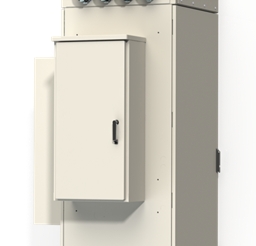Common Terms and Phrases for Cabinet and Enclosure Features
Automatic Transfer Switch
This switch monitors incoming line voltage from the primary utility line. When utility power is interrupted, the automatic transfer switch sources power from the secondary source, typically a battery bank or generator. When the automatic transfer switch determines the primary line voltage has returned to a steady state, it re-transfers the electrical source back to the primary utility line. Optional accessory for enclosures.
Battery Pedestals
A separate compartment at the base of the enclosure used to store batteries. This compartment is enclosed and thermally managed to extend battery life. Optional accessory for enclosures.
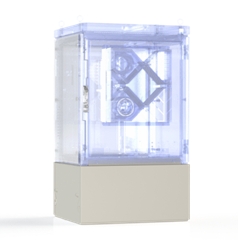
Cable Raceway
A thin compartment mounted on the top of the enclosure that neatly segregates and distributes cables across the enclosure to the appropriate chamber or section of the enclosure. This initial entry point for the cables into the enclosure is through the openings in the side of the cable raceway. Optional accessory for enclosures.
Craft Separation
An enclosure design objective that separates chambers so certain service functions are grouped into one chamber and different service functions are group into a second chamber. This partitioning ensures that a service person that specializes in a certain trade cannot access equipment that must be serviced by someone with a different skillset.
Emergency Ventilation System (EVS)
This system ventilates the enclosure upon high temperature alarm using redundant dual fans that operate at greater than 100 CFM. The EVS will be connected to primary power and typically battery back-up power as well.

H-Frame
A mounting structure that has two or more vertical metal posts and one or more horizontal metal beams connecting the vertical posts. The enclosure will be mounted on the horizontal beams.
Line Protection
Protection of electrical power from faults by switching power sources from faulty sources. Line protection keeps the power system stable by switching between multiple sources, typically primary utility power, back-up batteries, and back-up generators. Line protection is typically accomplished with an Automatic Transfer Switch.
Lifting Ears
Eyehooks mounted on the top of the enclosure, used to lift the enclosure during the installation process. Optional accessory for enclosures.
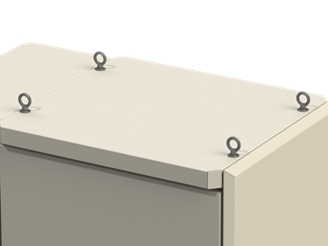
Line-up
An enclosure arrangement where multiple enclosures are mounted beside each other and bolted together into one structure. This enables expansion, while utilizing the power terminated in the first enclosure.
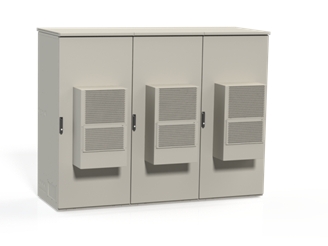
Ingress Protection (IP) Rating
The IP rating consists of the letters IP followed by two digits or one digit and one letter and an optional letter. Defined in international standard IEC 60529, the IP rating classifies and rates the degrees of protection provided by enclosures against the intrusion of solid objects, dust, accidental contact, and water.
Pad Mount
Installation of an enclosure on a concrete pad. The enclosure will be secured to the concrete pad by bolts embedded in the concrete pad.
Peltier Effect
Applying current across two dissimilar metals that results in the cooling of one metal and the heating of the other (i.e. a temperature differential). Thermoelectric coolers use the Peltier effect to create a heat flux between the junction of two different types of materials. A thermoelectric cooler is a solid-state active heat pump which transfers heat from one side of the device to the other, with consumption of electrical energy, depending on the direction of the current.
Plinth
A square metal base used to support an enclosure. Plinths are used to raise an enclosure so service access is easier or minimize risk of flooding at the installation site. Plinths can be open frame or enclosed with sheet metal sidewalls. Optional accessory for enclosures.

Plenum
A space within the ducting system that serves as a receiving chamber for air that has been heated or cooled before it is distributed through the remaining ventilation system of the enclosure.
Seismic Zone
A seismic zone is a region in which the rate of seismic activity remains fairly consistent. This may mean that seismic activity is incredibly rare, or that it is extremely common.
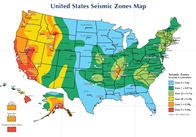
Side Chamber
A smaller chamber that can be mounted on the side of an enclosure. Side chambers, which are typically not thermally managed, can be used for many purposes – power termination and distribution (i.e. AC/DC load centers), physical cross-connect of cables, splicing of cables, and craft separation of tasks. Optional accessory for enclosures.
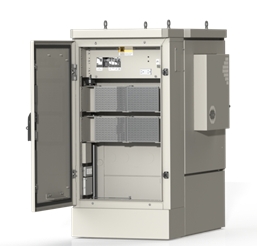
Solar Shield
Fiberglass shields that mount on the top or sides of the enclosure to reflect solar energy. Reflection of solar energy from the foreground and surrounding surfaces can impact the total amount of radiant exposure by as much as 30%. Top-shielding can yield a 25% reduction in the internal temperature of the enclosure, while combined top- and side-shielding can reduce the internal temperature by up to 45 %. Optional accessory for enclosures.
Stack-up
A short or half-height enclosure can be vertically stacked and mounted on top of another enclosure. The main benefit of vertical stacking is adding capacity without increasing the depth or width of the footprint, thus maximizing real estate.
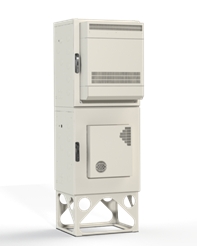
Telco Box
This compartment is mounted on the side of an enclosure, and is smaller than a side chamber. Telecom and communication equipment, typically supporting the alarm and remote management capabilities, are housed in this chamber. Optional accessory for enclosures.
